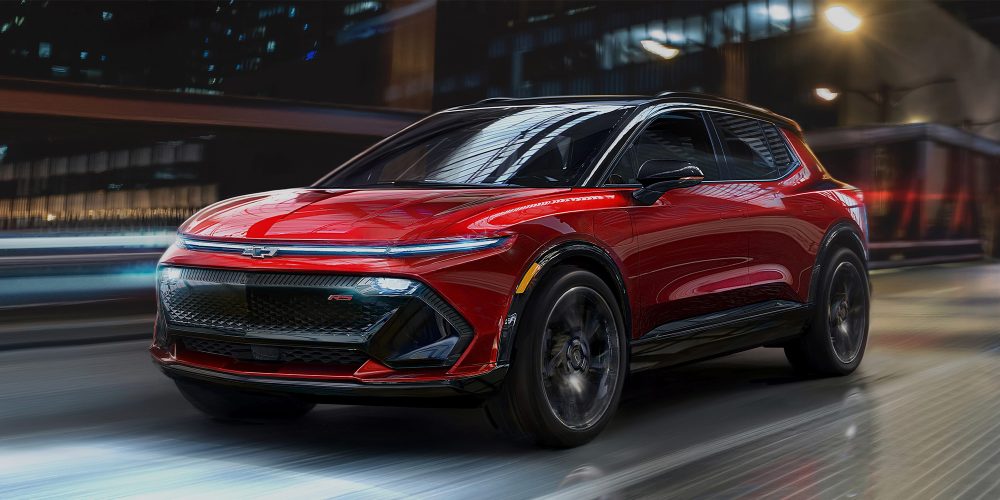
After sharing its quarterly deliveries to cap off 2021, General Motors revealed just how rough of a Q4 it had in terms of EV deliveries. While the legacy automaker has recently unveiled several new and exciting EVs to come, GM’s current EV output is quite nominal, opening the door for rival Ford to carry its electrified momentum to become the #2 EV automaker in the US behind Tesla.
Both Ford and GM are household names in the global automotive industry, especially on US soil where both automakers are headquartered. In fact, they were two of the top three automakers in the world by market share at one point in their lengthy history.
As most of the major automakers make their transition to zero emission EVs, Ford and GM, alongside Stellantis, announced a joint goal of having 40–50% of all vehicle sales be electric by 2030.
Ford began its true EV production journey in 2018, when it announced 16 BEVs to come. The company gained a lot of notoriety by electrifying the famed Mustang as the Mach-E , which has quickly become a hot seller around the globe.
It will soon be joined by the highly anticipated Ford F-150 Lightning, which already has over 200,000 reservations and has just recently received a doubling of its production capacity to 150,000 units by 2023.
Not to be outdone, GM helped pave the way early on in EV adoption with the Chevy Volt followed by the Chevy Bolt EV and EUV, some of its best sellers. It will soon be joined by GM brand EVs like the Cadillac Lyriq and GMC Hummer, as well as newly announced Chevy models like the Silverado, Equinox, and Blazer EVs.
GM has previously had an adequate amount of overall EV sales thanks to the Bolt. However, recent recall issues have caused halts to EV production this quarter, stymying the auto behemoth before year’s end.
As a result, Ford’s rapid expansion and continued success with its Mustang Mach-E has led to it swooping in on the #2 spot in the US behind clear leader Tesla.

GM loses to Ford for Q4 EV deliveries but will remain competitive
GM recently shared its numbers for the final quarter of 2021, and they’re not good – at least in terms of EV deliveries. Overall, the automaker delivered just 26 EVs, and while we don’t have Ford’s official delivery numbers yet, its safe to say they delivered quite a few more EVs than GM.
Unlike GM (for the time being), Ford is showing no signs of slowing down. In addition to the aforementioned doubling of F-150 Lightning production capacity, the American automaker has also shared expansion news for its Mustang Mach-E to 200,000 units per year by 2023.
The Mach-E, combined with Ford’s new E-Transit van and the electrified F-Series pickup, will have a global tally of over 600,000 BEVs per year in the next two years. GM shouldn’t be given up on either. The competitor is still promising 30 new EVs globally by 2025, including some of the exciting new models mentioned above.
That being said, announcing new EVs in one thing – reaching scaled production and achieving timely deliveries is another. A factor GM is going to have to play catchup on if it wants to reclaim its spot from Ford and remain on the podium in the US EV market.
Like Ford, GM has the infrastructure and operations in place to handle said EV output, but it will need to shift much of its production practices to support its “all-in” future of electric vehicles – a process that is already underway to some extent.
GM has already shared that Chevy Bolt production will once again resume at the end of January, offering the automaker more of a fair fight against Ford in Q1 of 2022. The copmany better get a move on though, because once F-150 Lightning deliveries begin, Ford is going to be tough to catch.
Electrek‘s Take
I know the data feels a bit skewed considering GM barely produced any EVs in Q4, but numbers don’t lie – no matter the circumstances. Chevy is still touting its goal for 30 EVs over the next three years. Applaudable, but a tall task nonetheless.
Despite being “all-in” on EVs, GM has yet to put many GM branded models on roads. The company finally seems to be making moves announcing several new electrified models that, truthfully, look awesome. But we’re a long way from 30, and not so far away from 2025.
GM will need to continue to pick up the pace and expand EV production. Ford on the other hand, appears to be in a great place and has been a lot more candid about its plans for expansion and deliveries. With a hit in the Mach-E, and the makings of a grand slam in the F-150 Lightning, Ford is sitting pretty. That said, the company should by no means take its foot off the accelerator.
Ahead of Ford sits Tesla, who delivered over 350,000 EVs in Q4 of 2021 alone. Behind the blue oval now sits GM, who has the game plan, the infrastructure, and the money to compete. And you better bet it will.
How fast the company can begin new production and successful deliveries of its new EV models will play a huge factor in how this US race turns out, but GM still has plenty to be optimistic about looking ahead at Ford’s back, despite its anemic Q4 numbers.
It will be interesting to see how these automakers compare a year from now, given all the new EVs scheduled for 2022 (from these companies as well as others). I’m looking to test drive ALL of them, so I’m rooting for production models sooner rather than later.
FTC: We use income earning auto affiliate links. More.


Comments